Remodeling Estimating: How Not to Lose Your Shirt on the Next Bid
Are you a home redecorator, general contractor, or interior designer frequently using back-of-the-envelope calculations for your bids? If so, do they ever come back to bite you?
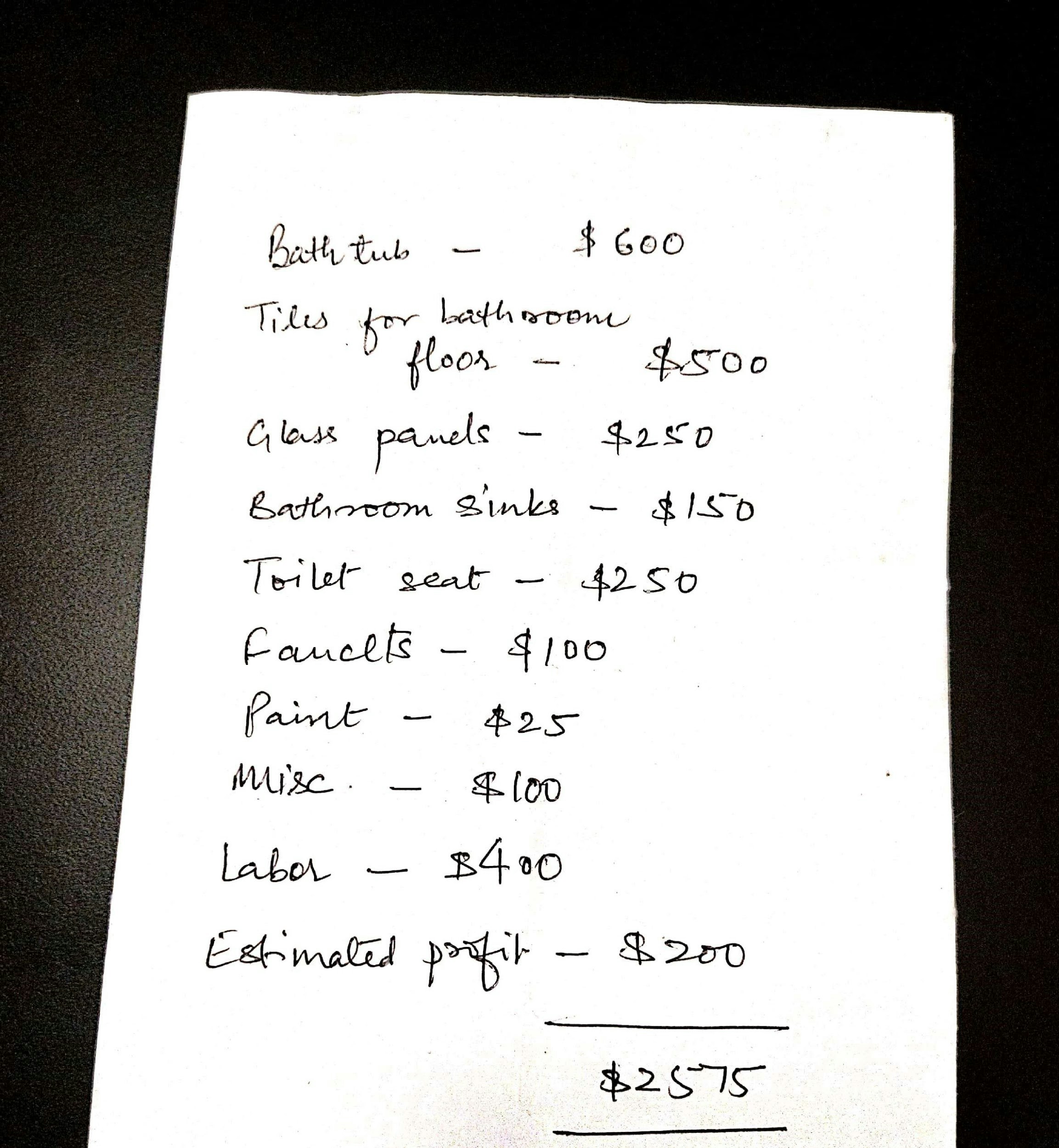
Back-of-the-envelope calculation for a bathroom remodeling project
Take this remodeling estimation for example. Let’s assume whoever prepared it missed accounting for bathroom light fixtures (possibly $100-$150) and bathroom mirrors (possibly $150-$200).
If this were your project, costs for these missed items could easily cut into your profits. Additionally, you could realize at a later time that the floor under the bathtub also needed replacing or the glass panel needed a rod to stabilize it. Costs for these last-minute realizations would add up and cut into your profits.
Fortunately, there are specialized tools to curtail dipping into your profits. In this article, we will introduce you to these tools and show how they can help make more accurate remodeling estimates.
Here’s what we’ll cover:
Are you losing your shirt to “guesstimation”?
How not to lose your shirt on your next bid—a three-step process
Next steps
Are you losing your shirt to “guesstimation”?
When preparing an estimate, the goal is to account for all possible expenses. You need to not only include materials and labor costs in your estimate, but also build in contingencies for cost overruns and extensions on project duration to ensure profitability.
Without specialized tools, you will have to rely on past experience and personal knowledge to generate remodeling estimates. You will guess the cost of materials required, add in estimated labor cost, add some profit margin, round it up on the back of an envelope, and serve it as a bid. However, that is more of “guesstimation” than an actual estimation, and that is the reason you could be losing money on your projects.
How not to lose your shirt on your next bid—a three-step process
Tools, such as residential remodeling estimating software and construction estimating software, can make cost estimation a lot more accurate and professional. They can help you do away with the uncertainties of manual estimating with features such as conceptual estimating, built-in templates, historical databases, cost databases, and what-if analysis.
Here is how you can use these tools to implement a three-step estimating process and ensure that you are not losing your shirt to bids that are under estimated:
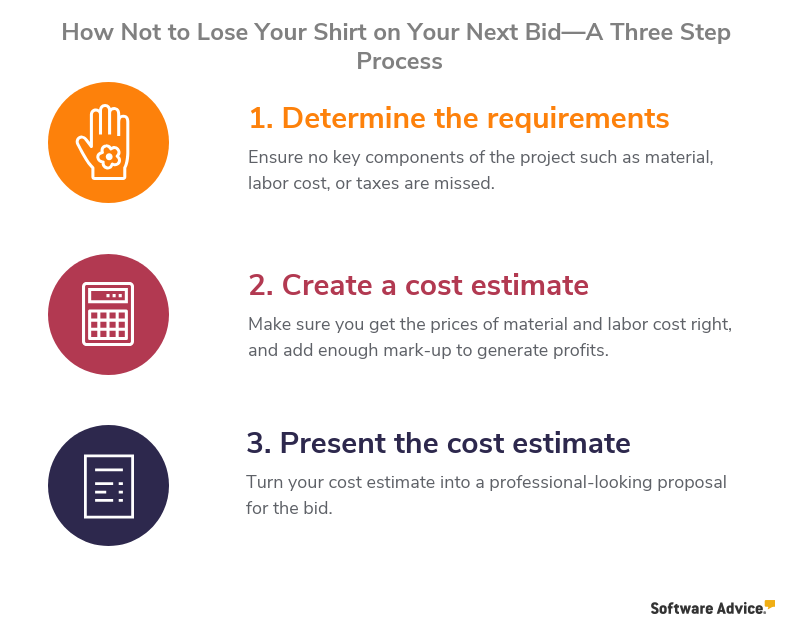
1. Determine requirements
Consider the scenario of having to bid for the bathroom remodeling project we discussed above. To start off, you have to go through the mental drill of listing all possible material and labor requirements. You will also want to ensure that you have not forgotten a rod or a light fixture that could later come back and cut into your profit.
Now imagine opening up a residential remodeling estimating tool or construction estimating tool, going to a pre-prepared template for bathroom remodeling, and having the tool automatically suggest a list of the possible materials required. From there, you can make adjustments to the quantities for your specific project—replace the shower cubicle with a bathtub, change the light fixtures from one to three, add two sinks instead of one, and more.
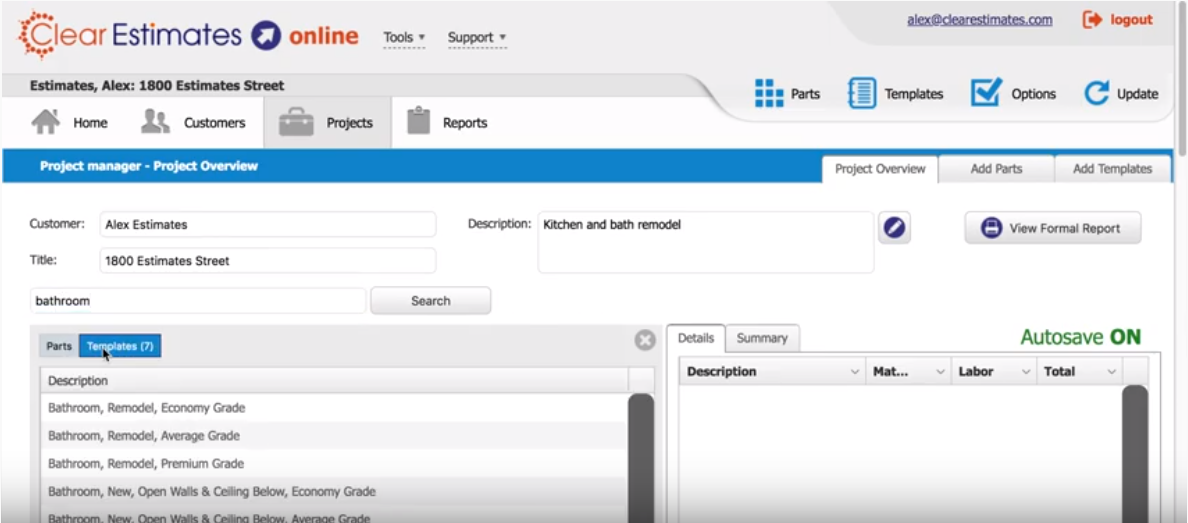
Bathroom remodeling templates in Clear Estimates (Source)
With templates, the chances of forgetting a key component is significantly reduced, if not eliminated. It saves the embarrassment of later confessing to the homeowner that you forgot to add a critical component to the cost estimate or the pain of having to bear those missed costs yourself.
Most remodeling estimation tools will provide templates for typical projects such as kitchen renovation, living room renovation, or bedroom renovation and help you to submit complete bids.
2. Create a cost estimate
To create a cost estimate for the bathroom remodeling scenario that we have been discussing through this article, you can use past experience and personal knowledge to guess the cost of the materials and the labor required. It will take a lot of mental math and you can still get the costs wrong.
There are many things to take into account when creating this estimate, including regional cost adjustments. For instance, a bathtub that costs $700 in Alabama, might cost $850 in New York and $600 on Amazon. Similarly, a handyman may be available for $17.70/hour in Alabama but could cost $29.76/hour in New York City.
Additionally, accounting for indirect costs, building contingency for unforeseeable factors, and adding enough mark-up are all important for the project to remain profitable.
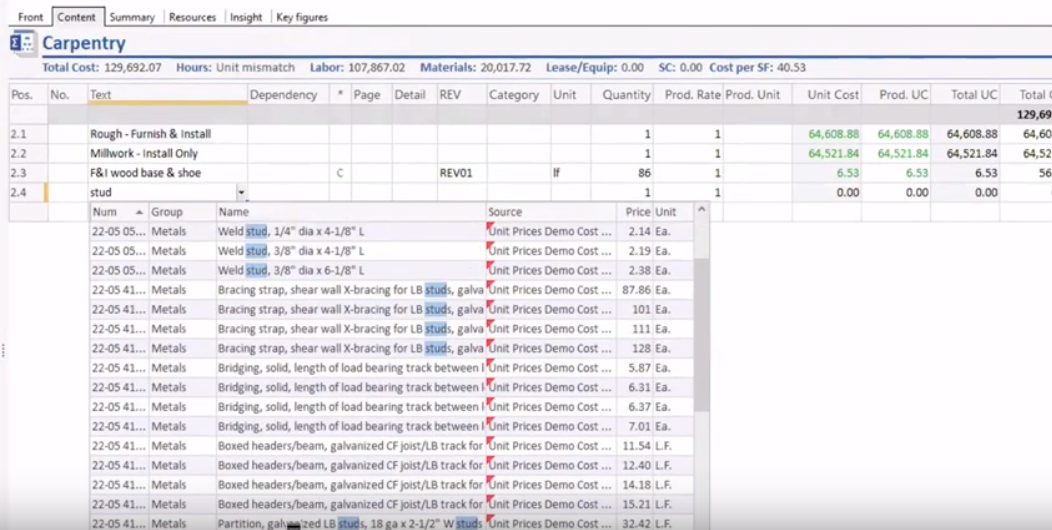
In-line price look up sourced through cost databases in Sigma Estimates (Source)
Using software for remodeling estimation can save you from all the mental math and give you a solid starting point. First, it can prompt you to add the indirect costs and contingency costs that you might forget. Second, it can help generate more accurate and up-to-date pricing estimates via integration with popular, local cost databases such as RemodelMAX and RSMeans.
Such databases provide up-to-date pricing information on thousands of construction materials and labor costs. Creating estimates based on pricing information from such databases will ensure that your bids are based on facts instead of “guesstimation.”
3. Present the cost estimate
Once you are done creating an estimate, it is time to turn it into a bid to present to the client.
As per our scenario, you present a hand-scribbled note displaying your estimate while your competition turns in a professional-looking bid with the company logo and each detail of the project explained. It is not too much of a leap to say that the competitor is going to have a better impression on the client than you.
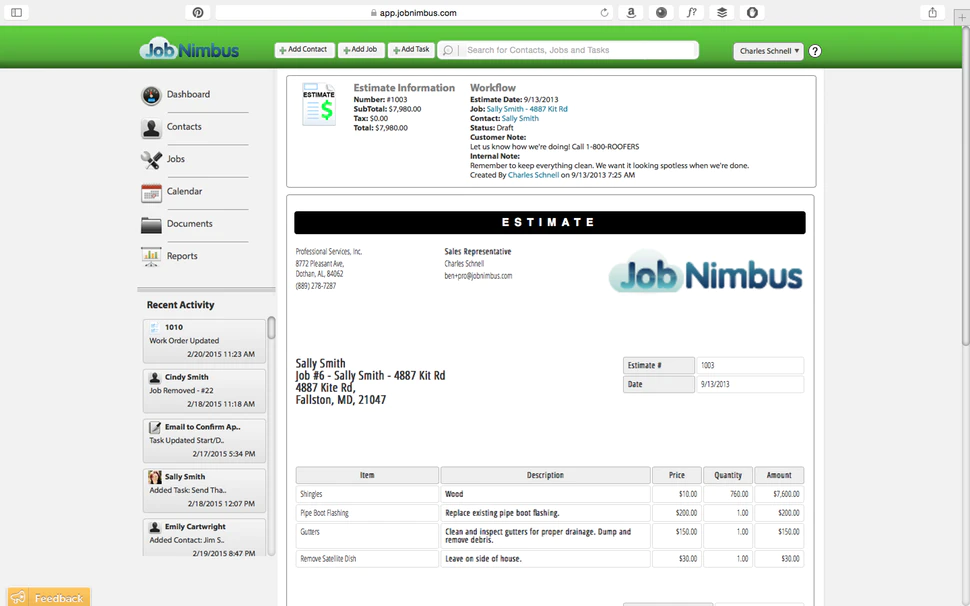
Creating a proposal in JobNimbus (Source)
A presentable proposal is no longer a nice-to-have but a must-have if you want to reflect professionalism and gain an advantage over your competition. And software such as residential remodeling estimating software or construction estimating software can help you create it.
After walking you through the steps of creating the cost estimate, the software can automatically compile all the information into a proposal. The proposal will detail every material needed for the project and the associated quantities and costs. They will also allow you to insert a company logo, add additional text into the document, and present a detailed payment schedule.
Next steps
Using software for remodeling estimation makes the process faster and more accurate. It helps save time and effort and avoid errors of human calculation. It also helps you stay up to speed with the competition in today’s fast-paced market.
If you are considering purchasing an estimating tool for yourself, we recommend starting with our residential remodeling estimating software buyers guide to better understand the features, pricing, and deployment models.
For personalized help, get in touch with a Software Advice expert at 844-847-3290 or book an appointment with our advisors for a free, no-obligation consultation.
Note: The applications selected in this article are examples to show a feature in context and are not intended as endorsements or recommendations. They have been obtained from sources believed to be reliable at the time of publication.